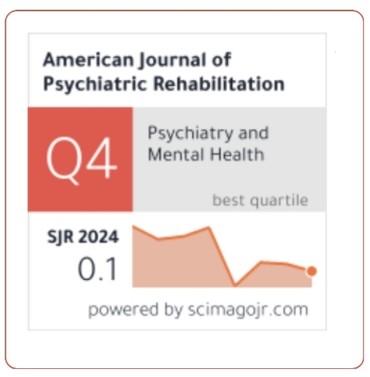Effectiveness Of Manual Therapy And Respiratory Muscle Training To Improve Pain, Posture, And Pulmonary Function In Post Mastectomy Patients
DOI:
https://doi.org/10.69980/ajpr.v28i3.710Keywords:
Respiratory muscle training (RMT), Pain management, Shoulder mobility, Range of motion, Maximum Inspiratory Pressure (MIP), Maximum Expiratory Pressure (MEP), Numeric Pain Rating Scale (NPRS), OWD (occiput to wall distance)Abstract
Background: Breast cancer is the most common cancer among women, by means of mastectomy being one of the major treatments and According to the Global Cancer Observatory, it accounts for nearly a quarter of all female cancer cases and over 15% of cancer deaths. Surgical management chiefly mastectomy, is frequently performed to control the disease, yet this procedure can result in significant postoperative complications, with shoulder pain, restricted mobility, poor posture, and respiratory dysfunction. Post-mastectomy respiratory dysfunction is a common notable concern, decreased thoracic mobility and increased kyphosis have been associated with reduced pulmonary restrictions such as forced vital capacity (FVC),forced expiratory volume in one second (FEV₁). The weakness of respiratory muscles may contribute to fatigue through the metabo-reflex mechanism, where metabolic by-products in fatigued respiratory muscles activate neural pathways that limit blood flow to limb muscles, thereby decreasing exercise tolerance and functional capacity. These impairments can be further compounded by anxiety, fatigue, and reduced quality of life. Given the increasing incidence of breast cancer, especially among younger women, effective rehabilitation strategies are needed to address both musculoskeletal and respiratory complications simultaneously.Current physiotherapy approaches frequently address musculoskeletal and respiratory issues separately, potentially limiting recovery outcomes wheres, Manual therapy techniqueslike Spencer’s Technique, have demonstrated benefits in enhancing glenohumeral joint mobility, reducing adhesions, and facilitating lymphatic drainage. Correspondingly respiratory muscle training (RMT) has shown potential in improving inspiratory and expiratory muscle potency reducing fatigue, and enhancing lung function in cancer survivors. However, research evaluating the combined application of manual therapy and RMT in post-mastectomy rehabilitation is lacking.An integrated approach targeting equally musculoskeletal and respiratory components may offer aadditional comprehensive solution, potentially reducing pain, improving posture &enhancing pulmonary function. This study aims to explore the effectiveness of combining manual therapy with respiratory muscle training for post-mastectomy women, thereby addressing a critical gap in current rehabilitation strategies.
Objective: This study aimed to evaluate the effectiveness of a combined rehabilitation intervention involving manual therapy (Spencer’s Technique) and respiratory muscle training (RMT) in improving pain, postural alignment, and pulmonary function in post-mastectomy patients.
Methods: A randomized controlled experimental study was conducted with 60 female participants who underwent mastectomy within the past 12 weeks. Participants were randomly assigned to two groups: Group A (experimental) received combined treatment – (Respiratory muscle training + Spencer’s Technique + TENS), while Group B (control) received only conventional physiotherapy interventions which includes TENS – For pain management, Postural correction exercise (Chin tuck, Scaption exercise, Codman’s exercise),Passive stretching of pectoralis major & breathing exercise (Pursed lip breathing , Diaphragmatic breathing & Buteyko Breathing).The intervention lasted for 12 weeks. Pulmonary function was assessed by Maximum Inspiratory Pressure (MIP) and Maximum Expiratory Pressure (MEP) and peak flow meter score. Kyphosis was measured using occiput to wall distance (OWD) test and pain was quantified using the Numeric Pain Rating Scale (NPRS). The primary outcomes were improvements in respiratory muscle strength, shoulder mobility, pain reduction, and postural correction.
Results: It was found that the combined intervention of Respiratory muscle training and manual therapy yield significant improvements in pulmonary function, decreased kyphosis, and pain reduction compared to conventional physiotherapy with enhanced shoulder range of motion, reduced pain, better respiratory muscle strength, improved thoracic expansion and reduced kyphosis resulting in overall improved functional capacity and quality of life.
Conclusion: The study presents a novel approach to post-mastectomy rehabilitation by integrating manual therapy with respiratory muscle training. This comprehensive approach may provide better rehabilitation outcomes for breast cancer survivors, addressing both musculoskeletal and pulmonary issues. The results could have significant implications for enhancing rehabilitation protocols and improving the long-term recovery and quality of life for post-mastectomy patients.
References
1. Franciane Batista Basilio(1), Raphaela de Medeiros Miranda dos Anjos(2) et al.Effects of manual therapy techniques in the treatment of pain in post mastectomy patients: systematic review.Published: 2 September 2014 196 MTP&RehabJournal 2014, 12:196-201.
2. Ferlay J, Ervik M, Lam F, Laversanne M, Colombet M, Mery L, Piñeros M, Znaor A, Soerjomataram I, Bray F (2024). Global Cancer
Observatory: Cancer Today. Lyon, France: International Agency for Research on Cancer. Available from: https://gco.iarc.who.int/today, accessed
3. Martín-Valero R, Jimenez-Cebrian AM, Moral- Munoz JA, de-la-Casa-Almeida M, Rodriguez- Huguet M, Casuso-Holgado MJ. The Efficacy of Therapeutic Respiratory Muscle Training Interventions in People with Bronchiectasis: A Systematic Review and Meta-Analysis. J Clin Med. 2020 Jan 15;9(1):231. doi: 10.3390/jcm9010231. PMID: 31952338; PMCID: PMC7019679.
4. 6.Al-Najar, K. M., Ibraheem, M. H., Zaki, R. M., Mohamed, D. A., Hady, A. A. A. A., & EL-Nahas, N. G. (2022). Effect of respiratory muscle training on ventilatory function in women post mastectomy. International Journal of Health Sciences, 6(S9), 3205–3213. https://doi.org/10.53730/ijhs.v6nS9.13268
5. Ibrahim AA, Gabr Ali AMM, Fadulelmulla IA, Ragab MMM, Aldemery AA, Mohamed AR, Dewir IM, Hakami HA, Hussein HM. Using Inspiratory Muscle Training to Improve Respiratory Strength, Functional Capacity, Fatigue, and Stress in Breast Cancer Patients Undergoing Surgery. J MultidiscipHealthc. 2024 May 1;17:1931-1941. doi: 10.2147/JMDH.S463961. PMID: 38706507; PMCID: PMC11070168
6. Lorbergs AL, O'Connor GT, Zhou Y, Travison TG, Kiel DP, Cupples LA, Rosen H, Samelson EJ. Severity of Kyphosis and Decline in Lung Function: The Framingham Study. J Gerontol A BiolSci Med Sci. 2017 May 1;72(5):689-694. doi: 10.1093/gerona/glw124. PMID: 27341855; PMCID: PMC5964740.
7. Romer LM, Polkey MI. Exercise-induced respiratory muscle fatigue: implications for performance. J ApplPhysiol (1985). 2008
Mar;104(3):879-88. doi: 10.1152/japplphysiol.01157.2007. Epub 2007 Dec 20. PMID: 18096752.
8. BaruchVainshelboima ,Sagar D. Sardesaia, Potential Therapeutic Role of Respiratory Muscle Training in Dyspnea Management of Cancer Survivors: A Narrative Review. Manuscript submitted November 29, 2023, accepted March 4, 2024, published online April 11, 2024. doi: https://doi.org/10.14740/wjon1781
9. .Koelwyn GJ, Jones LW, Hornsby W, Eves ND. Exercise therapy in the management of dyspnea in patients with cancer. CurrOpin Support Palliat Care. 2012;6(2):129-137
10. Chaitow, L., DeLany, J. W. (2011). Clinical Application of Spencer’s Technique. Elsevier.
11. Brukner, P., & Khan, K. (2017). Clinical Sports Medicine. McGraw-Hill Education.
12. Nagda, S., et al. (2014). Shoulder dysfunction after breast cancer treatment: Evaluation and management. South Asian Journal of Cancer, 3(2), 125–127.
13. Cervical flexion deformity in ankylosing spondylitis. Available from: https://www.uptodate.com/contents/imageimageKey=RHEUM %2F62964&topicKe y=RHEUM%2F7786&source=see_link
14. Wiyanad A, Chokphukiao P, Suwannarat P, Thaweewannakij T, Wattanapan P, Gaogasigam C, Amatachaya P, Amatachaya
S. Is the occiput-wall distance valid and reliable to determine the presence of thoracic hyperkyphosis?. Musculoskeletal Science and Practice. 2018 Dec 1;38:63-8.
15. Occiput to Wall Distance OWD. (2023, January 26). Physiopedia, . Retrieved 08:55, August 17, 2025 from https://www.physio- pedia.com/index.php?title=Occiput_to_Wall_Distance_OWD&oldid=326081.
16. Kim HJ, Kim S, Freedman RA, Partridge AH. The impact of young age at diagnosis (age <40 years) on prognosis varies by breast cancer subtype: A U.S. SEER database analysis. Breast. 2022 Feb;61:77-83. doi: 10.1016/j.breast.2021.12.006. Epub 2021 Dec 13. PMID: 34923225; PMCID: PMC8693310.
17. O'Connor T, Shinde A, Doan C, Katheria V, Hurria A. Managing breast cancer in the older patient. ClinAdvHematolOncol. 2013
Jun;11(6):341-7. PMID: 24472802; PMCID: PMC3906632.
18. Al-Najar, K. M., Ibraheem, M. H., Zaki, R. M., Mohamed, D. A., Hady, A. A. A. A., & EL-Nahas, N.
G. (2022). Effect of respiratory muscle training on ventilatory function in women post mastectomy.International Journal of Health Sciences, 6(S9), 3205–3213. https://doi.org/10.53730/ijhs.v6nS9.13268
19. 22.ES Contractor, DS Agnihotri, RM Patel - Effect of Spencer Muscle Energy Technique on pain and functional disability in cases of adhesive capsulitis of shoulder joint -iaimjournal.com 2016; 3(8):126- 131
20. Akutay S, YücelerKaçmaz H, Ceyhan Ö. The healing power of transcutaneous electrical nerve stimulation: a systematic review on its effects after breast surgery. Support Care Cancer. 2025 Jan 13;33(2):90. doi: 10.1007/s00520-024-09129-3. PMID: 39804405; PMCID: PMC11729116.
21. Atalay C, Yilmaz KB. The effect of transcutaneous electrical nerve stimulation on postmastectomy skin flap necrosis. Breast Cancer Res Treat. 2009 Oct;117(3):611-4. doi: 10.1007/s10549-009-0335-z. Epub 2009 Feb15. PMID: 19219630.
22. Gumuscu BH, Kisa EP, Kara Kaya B, Muammer R. Comparison of three different exercise trainings in patients with chronic neck pain: a
randomized controlled study. Korean J Pain. 2023 Apr 1;36(2):242-252. doi:10.3344/kjp.22371. Epub 2023 Mar 21. PMID: 36941087; PMCID: PMC10043788.
23. Mohite PP, Kanase SB. Effectiveness of Scapular Strengthening Exercises on Shoulder Dysfunction for Pain and Functional Disability after Modified Radical Mastectomy: A Controlled Clinical Trial. Asian Pac J Cancer Prev. 2023 Jun 1;24(6):2099-2104. doi:
10.31557/APJCP.2023.24.6.2099. PMID: 37378941; PMCID: PMC10505872.
24. Cunningham G, Charbonnier C, Lädermann A, Chagué S, Sonnabend DH. Shoulder Motion Analysis During Codman Pendulum Exercises. Arthrosc Sports Med Rehabil. 2020 Jun 26;2(4):e333-e339. doi:10.1016/j.asmr.2020.04.013. PMID: 32875297; PMCID: PMC7451869.
25. Wang H, Liu XL, Wang T, Tan JB, Huang H. Breathing Exercises for Pain Management in Cancer Survivors: A Systematic Review. Pain ManagNurs. 2023 Jun;24(3):299-310. doi: 10.1016/j.pmn.2022.11.003. Epub 2022 Dec 22.PMID: 36566114.
26. fatmas.f.ahmed, phd.*; nancyh.a. aboelnour, phd.*; et al.Effect of Resisted Deep Breathing on Post Mastectomy LymphedemaMed. J. Cairo Univ., Vol. 91, No. 4, December: 1443-1448,2023
27. Haiying Wang, Xian-Liang Liu, et al.Breathing Exercises for Pain Management in Cancer Survivors: A Systematic Review,Pain Management Nursing,Volume 24, Issue 3,2023,Pages 299-310,ISSN 1524-9042,https://doi.org/10.1016/j.pmn.2022.11.0 03.
28. herusupriwandani*, mardiyono, warijan slow deep pursed-lips breathing exercise on vital lung capacity in post-extubation patients in the intensive care unit warijan. belitung nursing journal. 2018 february;4(1):58-67 received: 18 july 2017 | accepted: 2 september 2017 http://belitungraya.org/brp/index.php/bn j/
29. Gunjan Singh1 , M. Raghavendran2 buteyko Breathing Technique ,JNPE, June2021, Vol.7, Issue 2, pp. 13 – 16,ISSN No. 2395-1974
30. Mohamed, Yosreah,Mohamed, et al. The Effect of Buteyko Breathing Technique among Patients with Bronchial Asthma: Comparative Study.,2019/09/21DO -10.13140/RG.2.2.35603.20007
Downloads
Published
Issue
Section
License
Copyright (c) 2025 American Journal of Psychiatric Rehabilitation

This work is licensed under a Creative Commons Attribution 4.0 International License.
This is an Open Access article distributed under the terms of the Creative Commons Attribution 4.0 International License permitting all use, distribution, and reproduction in any medium, provided the work is properly cited.









